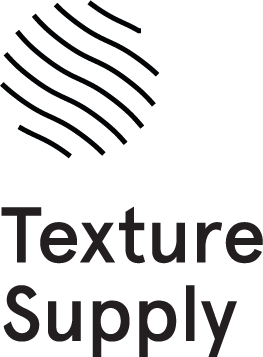About our seamless textures
Capturing how the texture of a material or surface feels is not the most effortless process. And it’s not as easy as just pointing some cameras and lights on a surface to produce a good texture.
Doing that would be settling for the mere image of a material, and we think we all deserve better than that.
Relying on what cameras we use would limit ourselves to the resolution and sensitivity of today’s technology. After all, the camera can’t match the fidelity and the sense of the human eye.
It is the portal to our souls, and it leads to the essential feel of a near-perfect seamless texture.
Our texture scanning process
Our scanning process has taken us to many places and allowed us to meet many great people. We’ve learned so much about different materials and the challenges that come with scanning them - everything from the pure logistics of the scanning process to learning how materials react to light. But as with other creative lines of work, our process starts with inspiration.
Finding the right materials
As much as we would like to capture every texture our eyes can see, time limits us and forces us to choose. Which happens to align well with our philosophy of “quality over quantity”. When we select materials, we consider a few things:
Personal inspiration
We’re constantly looking around to find something we would like to scan and make available. For us, it’s fun, and it also challenges us to improve our process continuously.
Demand for textures
We actively listen and watch for what you ask for on our social channels and try to answer that demand as best we can. What good is a high-res texture if no one is there to use it?
Available materials to scan
We don’t just grab a wooden floor texture out of thin air. The original surface exists in the real world somewhere. We have so many ideas for textures, and we would like to see them all come true. And you can believe that as soon as a material is available to us, we’re going to make a scanned texture out of it.
Once any combination of these conditions is met, we prepare and set out to find and capture that texture. And so, the adventure begins.
Scanning the material
Our first stop on our quest is to capture the texture. We gently bring the material out and carefully put it into place. We then scan it using several cameras and lights over a large surface area. Photographing is the first step in making our textures unique, so we take our time to get the best possible outcome. Perfect seamless textures demand time and effort, and we do our best to abide. The results? Scanned textures with higher resolution.
Processing the scanned texture
Scanning large surfaces produces large amounts of data. Even a small scanned texture can produce around 25GB of raw data - all of which need to be processed and translated into the texture’s normal and displacement maps.
Scanned textures with a human touch
Remember how we said that we don’t want to limit ourselves to the technology we use? - this is when that comes in.
With our extensive experience with graphical design, 3d renders, and visualization, we noticed that whenever we use certain 3rd-party textures, we don’t get that sense of realism that we crave. We don’t feel anything. The textures had no soul.
We concluded that something was missing. We realized that our eyes process visuals differently than computers and that our textures needed a hint of intuition and a pinch of human touch.
Tiling for seamless textures
Good high-resolution textures aren’t limited by size or scale. They should work in close-ups as well as in wide shots. Therefore, the scanned texture must be large enough to hide repetitions and high-res enough to maintain detail. All for textures that are effortless to work with, time-saving, and most of all - seamless.
Testing the results
Our textures go through a long testing phase to see if they function the way we need them to and if they look the way we want them to. We often go back and retouch things that don’t feel right. We trust our eyes and follow our hearts.
Once the textures meet our high standards, we release our newborn textures to the world to become assets in your beautiful visualizations.
Higher demand for higher standards
Our business is relatively young and it’s still learning best practices. But progress comes quick and swift as technology advances at a faster and faster pace. It’s therefore vitally important to us that our textures also are future-proof. That no matter what new innovations are around the corner, our textures will still be of the highest standard. If something needs changing, we’ll change it. If something needs improvement, we’ll improve it.
So that you can make an easy investment and enjoy premium results for years to come.




